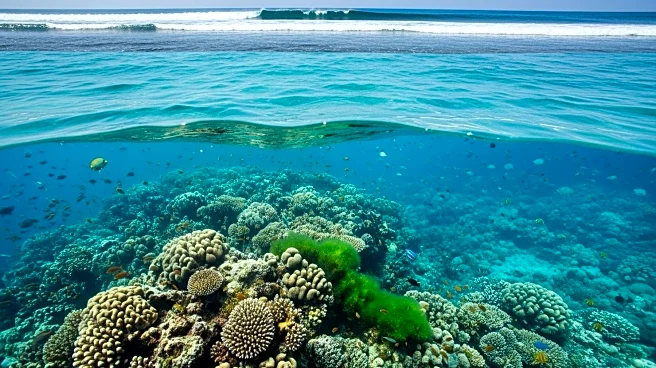What is the story about?
What's Happening?
South Australia is facing a severe algal bloom that has killed marine life along 11 kilometers of coastline. The bloom, identified as Karenia mikimotoi, started in January and has grown to over 4,500 square kilometers. It has caused significant environmental damage, with council workers collecting up to 200 kilograms of dead marine life daily. The bloom has also affected the mental health of the community, with residents experiencing 'ecoanxiety' due to the ongoing environmental disaster. The state and federal governments have allocated $28 million for cleanup operations, but the bloom continues to persist.
Why It's Important?
The algal bloom represents a significant environmental crisis, impacting marine biodiversity and the local community's mental health. It highlights the broader issue of climate change and its effects on marine ecosystems. The bloom's persistence despite cleanup efforts underscores the challenges of managing environmental disasters and the need for effective response strategies. The community's mental health concerns reflect the psychological impact of witnessing environmental degradation, emphasizing the importance of addressing 'ecoanxiety' and supporting affected populations.
What's Next?
A parliamentary inquiry into the algal bloom is set to report in October, aiming to understand its causes, impacts, and management. The inquiry will explore the role of climate change and other factors contributing to the bloom. The community is encouraged to participate in discussions and provide input on the inquiry. The ongoing cleanup efforts will continue, with local councils rotating duties to manage the workload and support community well-being. The inquiry's findings may lead to policy changes and increased investment in environmental protection and disaster response.
Beyond the Headlines
The algal bloom has highlighted the importance of community engagement and resilience in the face of environmental challenges. The community's proactive response to the crisis, including organizing cleanup efforts and supporting each other, demonstrates the potential for collective action to address environmental issues. The event also raises questions about the long-term impacts of climate change on marine ecosystems and the need for sustainable management practices. The psychological effects of the bloom underscore the need for mental health support and resources for communities facing environmental disasters.
AI Generated Content
Do you find this article useful?

